How upcoming Hume station was built while Downtown Line trains kept running
Construction to make Hume an operational station began in January 2021, and last month, Transport Minister Chee Hong Tat announced that it will open ahead of schedule on Feb 28.
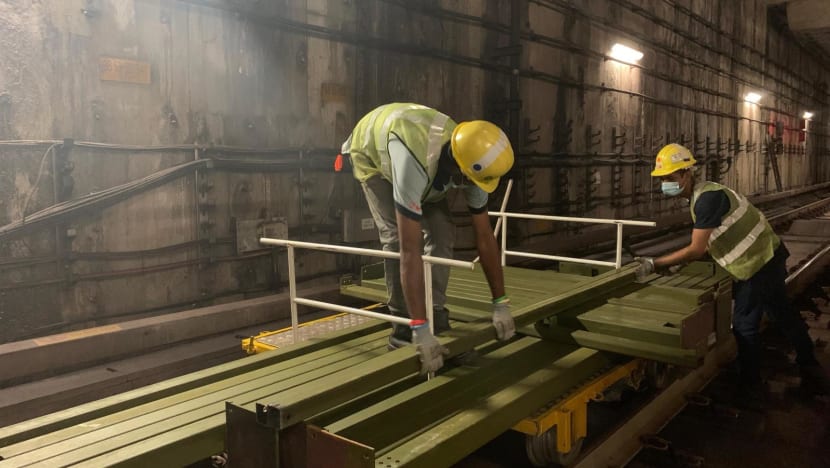
A track trolley loaded with around 100kg to 200kg of construction material to be pushed about 700m by a team of workers from Hillview to Hume station. (Photo: Land Transport Authority)

This audio is generated by an AI tool.
SINGAPORE: Constructing the soon-to-open Hume station posed unique engineering challenges, including the need for workers to manually transport some construction materials 700m on a track trolley from the adjacent Hillview station.
The station's integration into the Downtown Line (DTL) was further complicated by strict testing limitations. Engineers had only a narrow window between 1am and 3am - outside passenger service hours - to conduct tests with trains.
Hume station is the first underground station in Singapore built while trains continued running through the site. Located between the operational Hillview and Beauty World stations, it was initially constructed as a “shell station” - a structure with only the basic framework - during the DTL's second phase in 2015.
The pace of developments and ridership growth in the area did not warrant its opening at the time, said then-Senior Minister of State for Transport Janil Puthucheary in 2019.
Work to fully equip the station for operations began in January 2021, and Transport Minister Chee Hong Tat announced last month that the station will open ahead of schedule on Feb 28.
CIVIL ENGINEERING CHALLENGES
Building an underground station without initial above-ground access presented logistical hurdles, according to a Land Transport Authority (LTA) factsheet.
Lighter construction materials had to be transported manually from Hillview station 700m away, while heavier materials like structural steel were delivered via a special "engineer's train" from DTL’s Gali Batu depot.
Track access was limited to just two or three times a week, during engineering hours between 1am and 3.30am. These sessions included transit time from Hillview station to Hume and back.
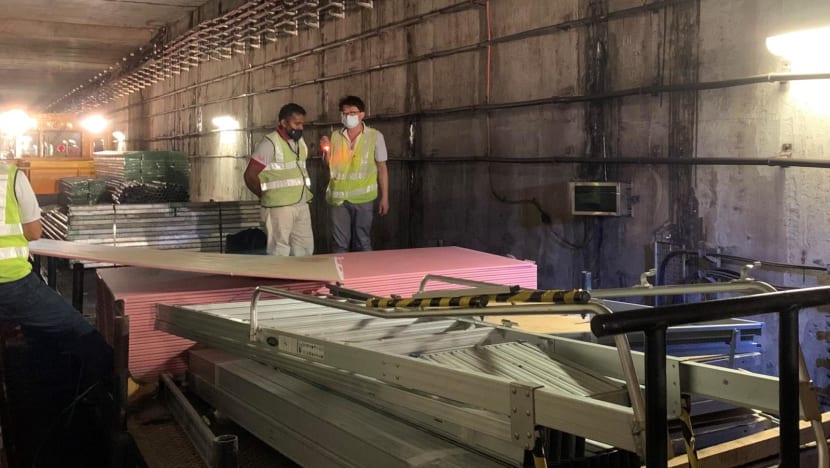
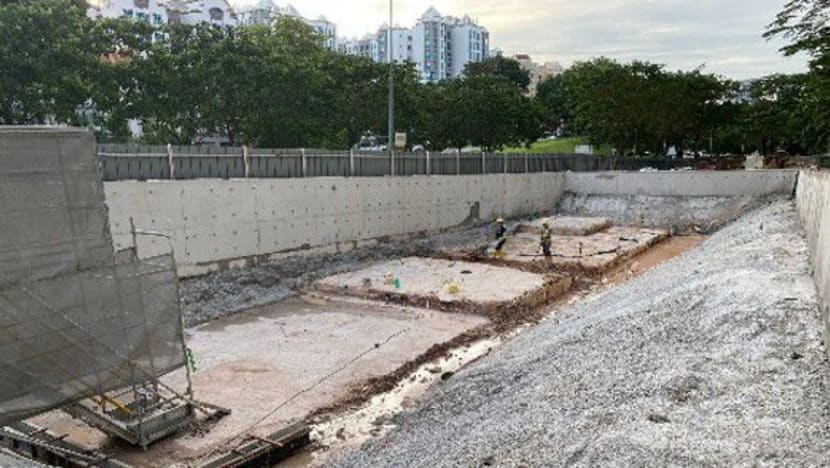
To separate the construction zone from live train operations, a "fire compartment" - a space with fire-resistant walls and floors - was modified. Flood protection walls were also erected to safeguard the line from potential floods.
Only with these safeguards in place could workers remove "knock-out panels", which can be removed to create openings for surface access.
Given the Hume station's proximity to residential developments such as Hume Park 1 and Hume Park 2, extensive sound and vibration monitoring instruments were installed to minimise disturbances to residents.
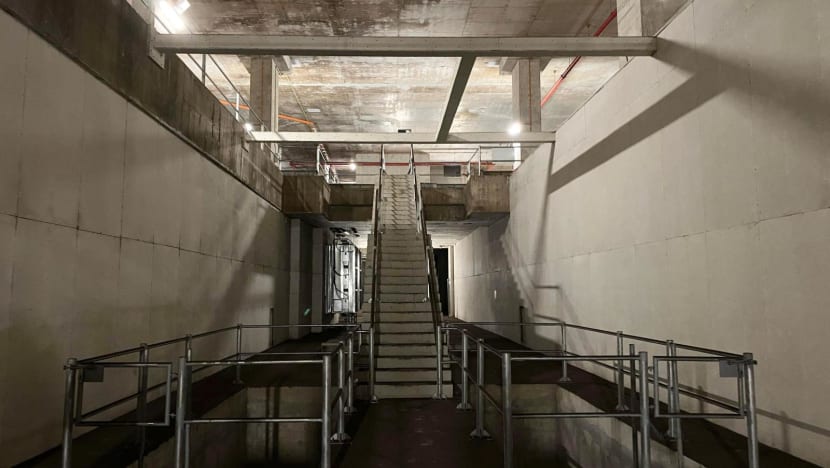
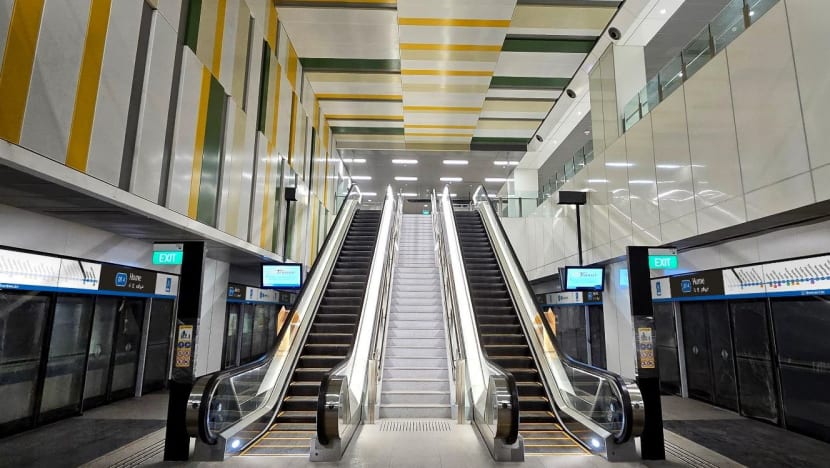
TWO-HOUR TESTING WINDOW
“Integration tests” such as those involving trains could only be conducted within limited engineering hours.
Once passenger service ended and LTA could take control of Hume, a few adjacent stations and the tunnel sections, it would be around 1.15am, the agency said.
“By 3am, we have to stop testing, do post checks and handover to the operator by 4am in preparation for passenger service,” LTA added.
The handover process includes switching operational systems between test and passenger service modes. Key systems between Hume station and the rest of the DTL had to be integrated, such as communications, signalling and tunnel ventilation.
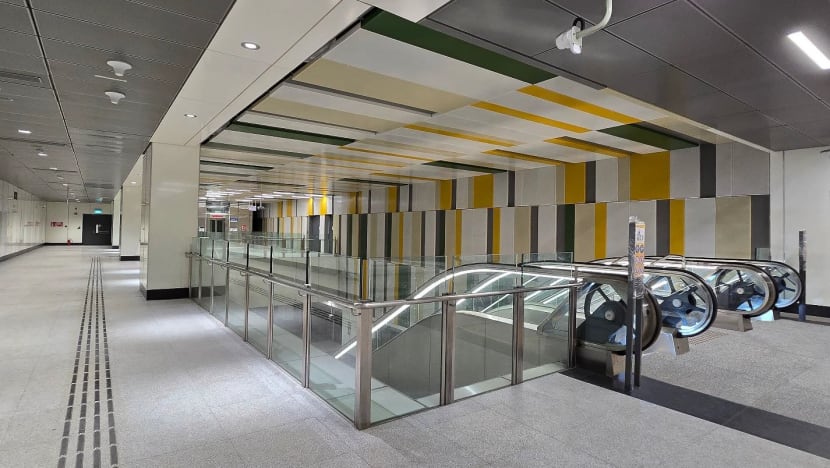
WHAT COMMUTERS CAN EXPECT
Hume station will have two entrances: one facing Upper Bukit Timah Road and another facing Hume Avenue. Covered linkways will provide sheltered access to nearby bus stops and pick-up and drop-off points.
For cyclists, the station will have 60 bicycle parking lots near its entrances.
Accessibility features include mirrors inside lifts to assist wheelchair users in reversing out, along with centrally positioned lift buttons for easier reach.
The station has achieved the BCA Green Mark Gold certification for its green features, such as solar panels on the rooftop, energy-efficient lighting and a hybrid cooling system.
With the completion of Hume station, the DTL will have a total of 35 operational stations.
















